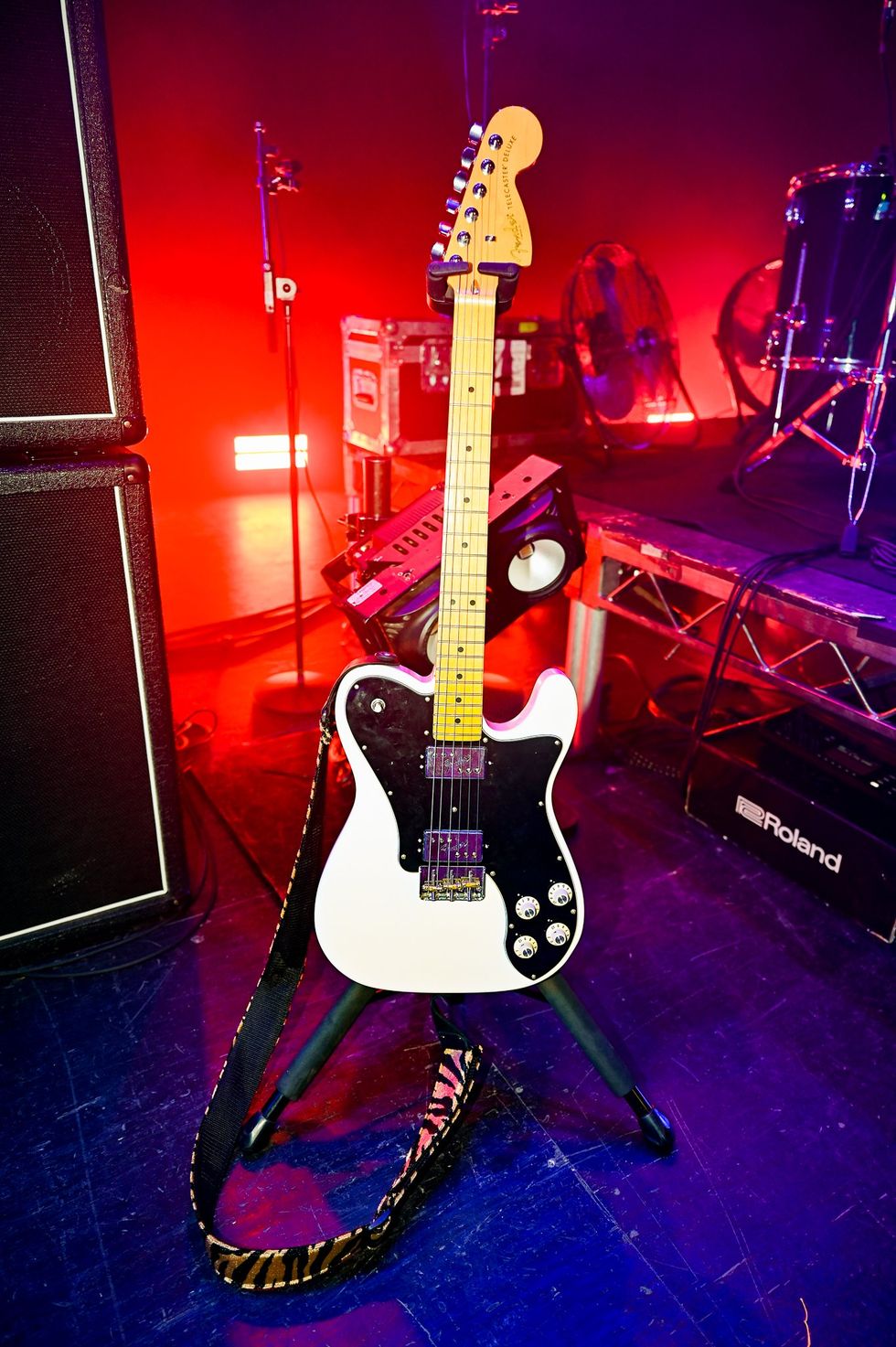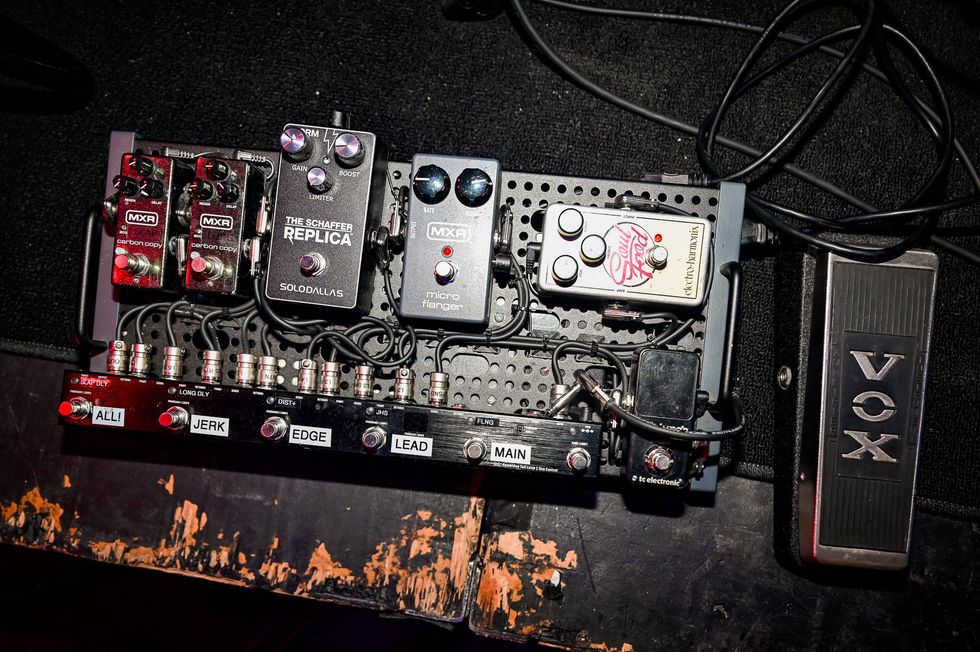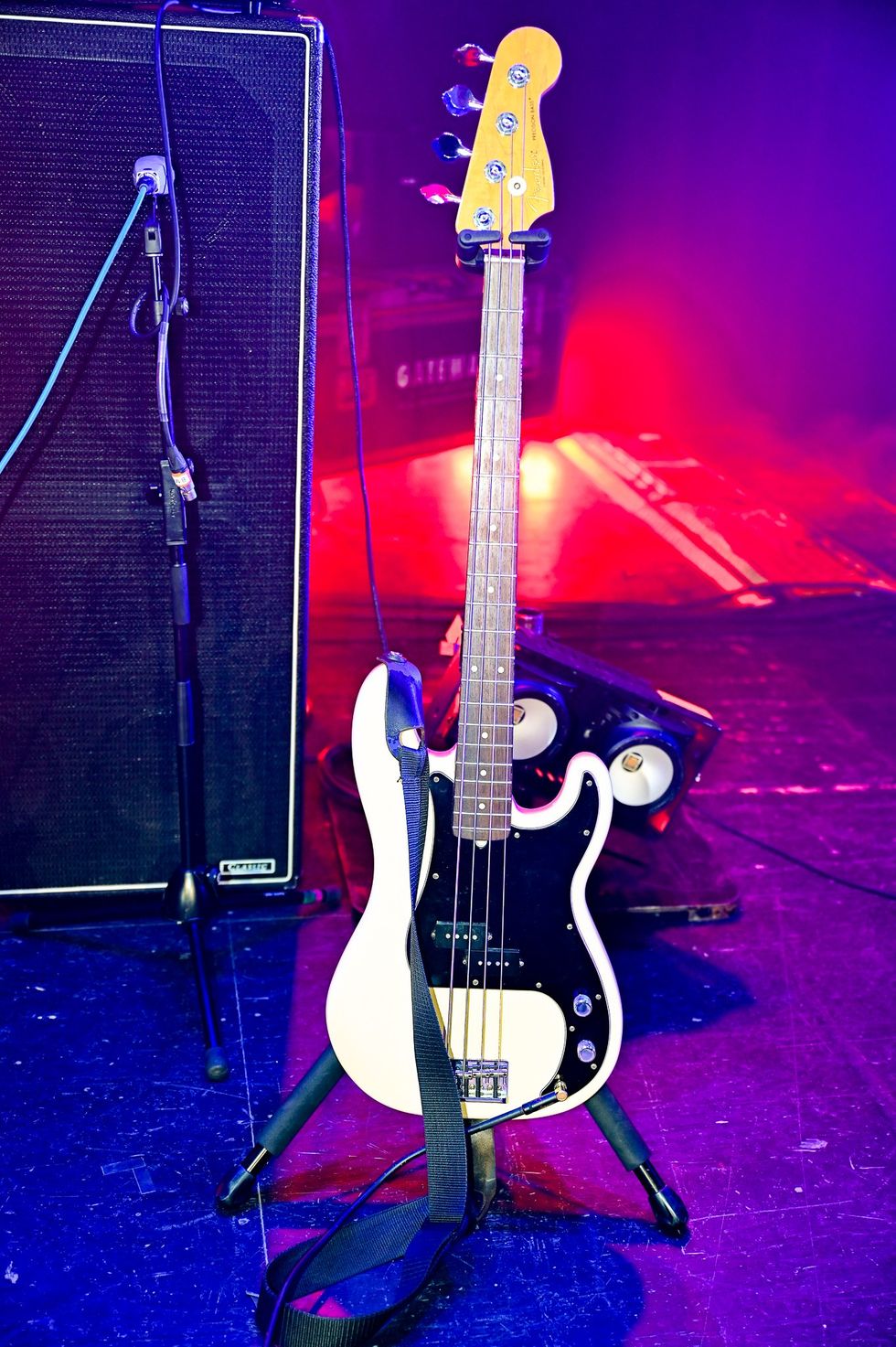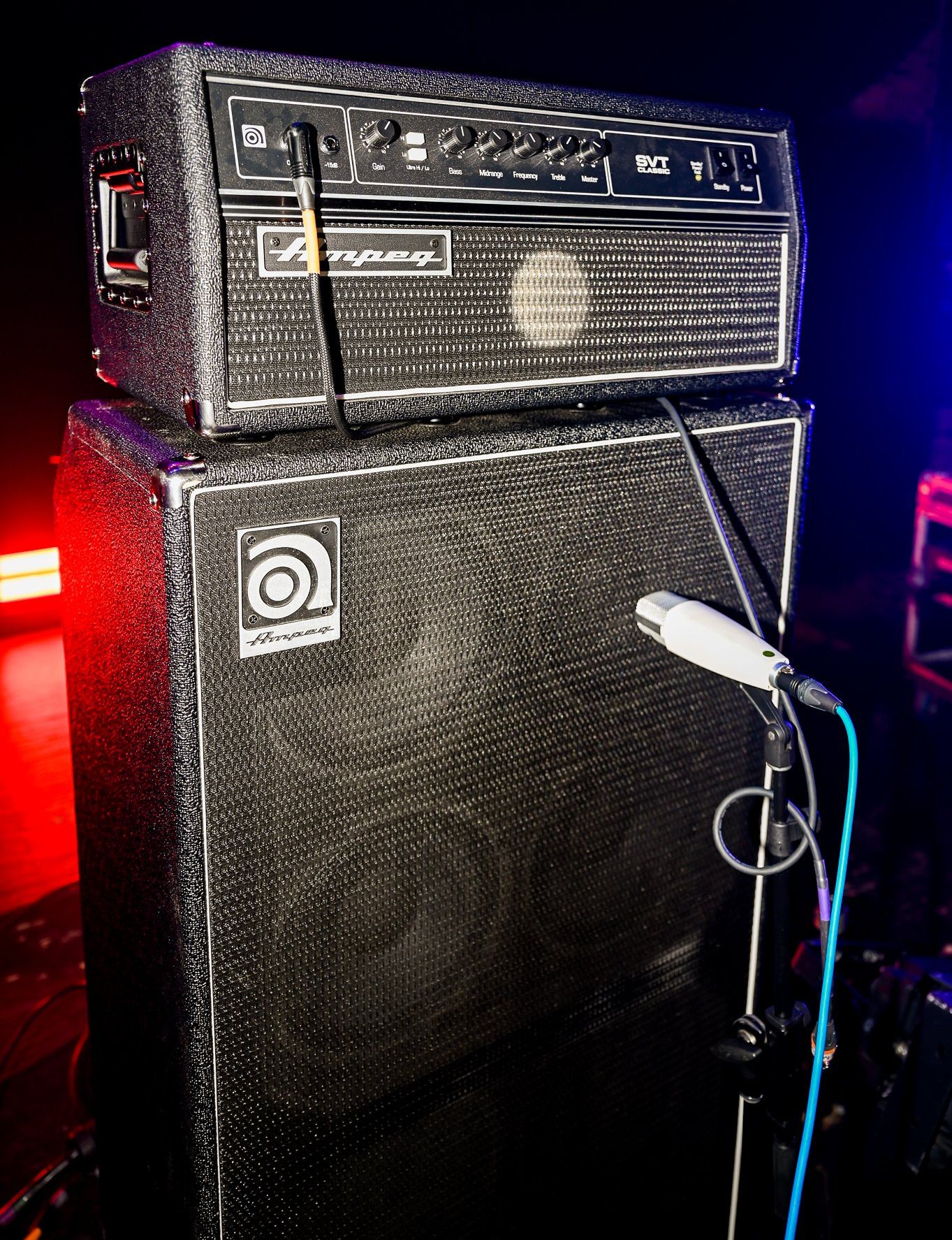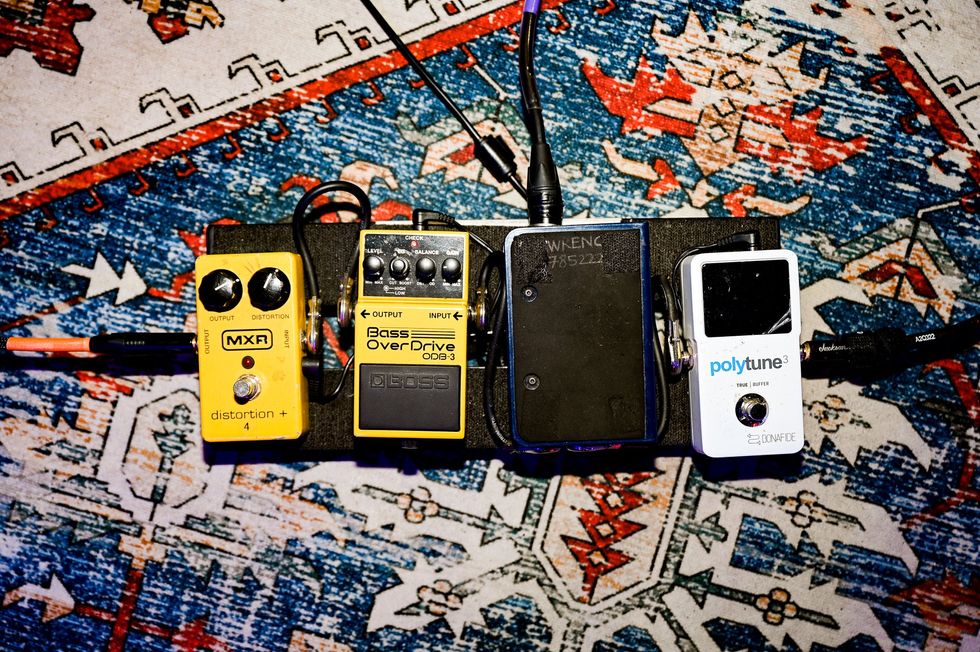In our previous installment, we began investigating bass vibrato systems, and I promised that this time around, we’d take a closer look at what the market has to offer. Ready? Let’s do it!
Four ways to whammy.Mechanically, there are only four ways to achieve a vibrato, other than manually bending the string or using a fretless. The oldest system is the Bigsby version, which uses a stop tailpiece with a rotating axis that has strings wrapped around it.
Then there’s the linear vibrato system. With this design, the entire bridge-and-stop-tailpiece array shifts forward and backward along the axis of the strings.
A fulcrum-style trem—which we know from Floyd Rose and Fender guitars—is mounted on two studs, and has knife edges that pivot the whole bridge assembly (Fig. 1).
Finally, there’s the fully top-mounted cam version. This device leaves the bridge fixed and moves the point where the string ball-ends are anchored (Fig. 2).
Due to the smaller bass market, only the two latter versions are commercially available. Several hardware manufacturers have made small production runs and prototypes of alternative systems, but these have ceased, mainly due to low demand. No doubt there are many other prototype or DIY builds floating around, but there are no commercially available Bigsby-style or linear systems for bass. And the number of manufacturers for cam and fulcrum bass vibratos is as low as three—Hipshot, Kahler, and Bach.
Fulcrum versus cam. While the fulcrum whammy dominates the guitar market, bass players seem to lean toward cam-based vibratos like the Kahler. Each design has its pros and cons. Generally, fulcrum trems use fewer parts, which makes them cheaper than all-in-one cam-based models with more parts.
Which design you choose can also depend on your playing technique. A flatpick player accustomed to palm-muting the strings can easily push a fulcrum trem out of tune. Most other differences between the fulcrum and cam devices concern the setup process, which is way more complex with a trem than a standard fixed bridge.
Different devices may have unique features, whether it’s the fine-tuners on the Bach vibrato or the Kahler’s locking mechanism. The latter adds even more functionality to the trem: Lock it and you have a standard bridge that works with any tuning or a headstock D-tuner. You can even lock the bridge to compensate for the missing tension of a broken string. Another cool thing is how you can adjust the trem springs from the top of the bridge. Lock the unit, tune, then unlock and readjust the spring tension to match the previous tuning and—voilà—the spring setup is done.
By comparison, the setup process for fulcrum models seems to be an endless cycle of adjustment until you get an adequate equilibrium in tension between springs and strings. This might not bother you if your luthier or tech is doing the job, but keep in mind that the adjustment starts all over again when you switch string gauges or tunings.
Despite that, an untold number of guitarists use the fulcrum system instead of the cam one, and many claim there are sonic advantages, especially in the area of sustain. Whether that’s truth or fiction can’t be judged from a theoretical view. Nor do we know whether these alleged sonic discrepancies would actually affect the bass. After all, the general sonic goals of guitarists and bassists differ as much as their instruments.
Many whammy guitars have a locking nut instead of a regular one, so it’s a bit surprising there’s not a locking nut for bass guitar. Either no one cares if we’re in tune as long as we keep the rhythm, or drifting out of tune is simply less critical on bass. Hard to say, but one might add a slippery graphite replacement nut to the budget in case of tuning problems. In a related aside, it’s curious that the Bach bass whammy offers fine tuners, yet has no locking nut.
Choosing a trem systems depends not only on your budget, but on whether you need a single bass that lets you choose between a whammy and fixed bridge, or whether you have enough instruments that you can dedicate one of them solely to mechanical vibrato. Either way, adding vibrato to your musical palette can give you a creative boost and let you explore much more than dive bombs.
Fig. 2. A cam-style bass whammy from Kahler. Photo courtesy of kahlerusa.com
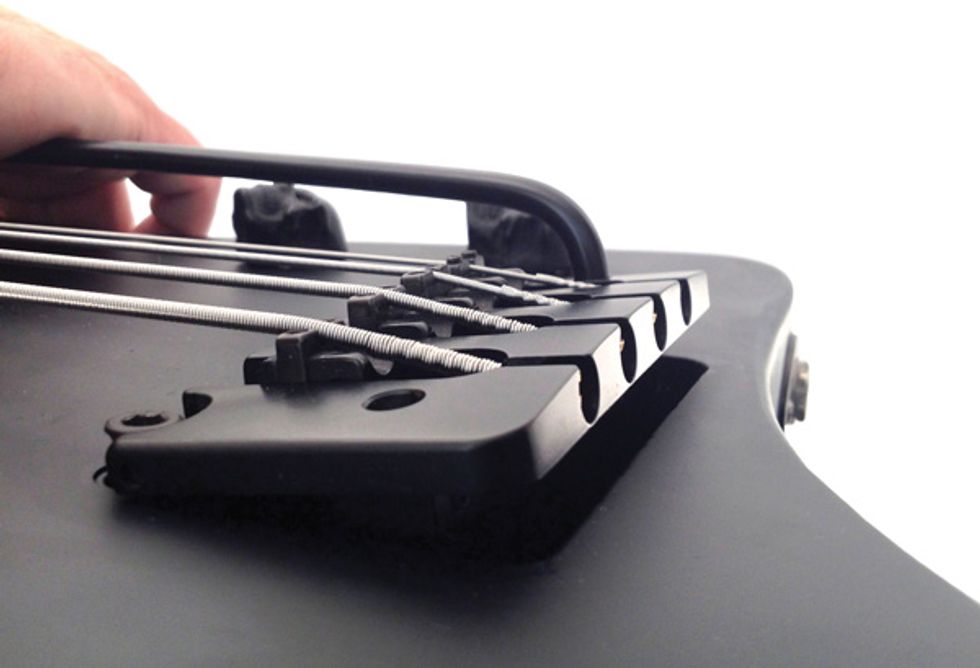

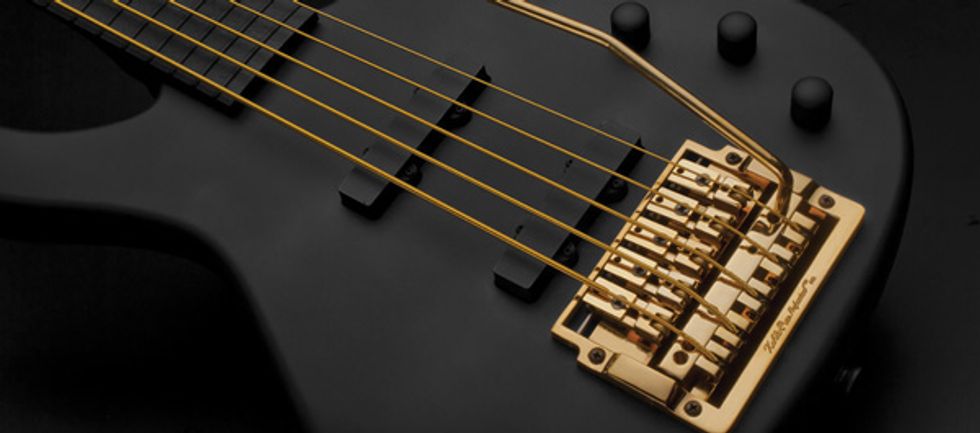

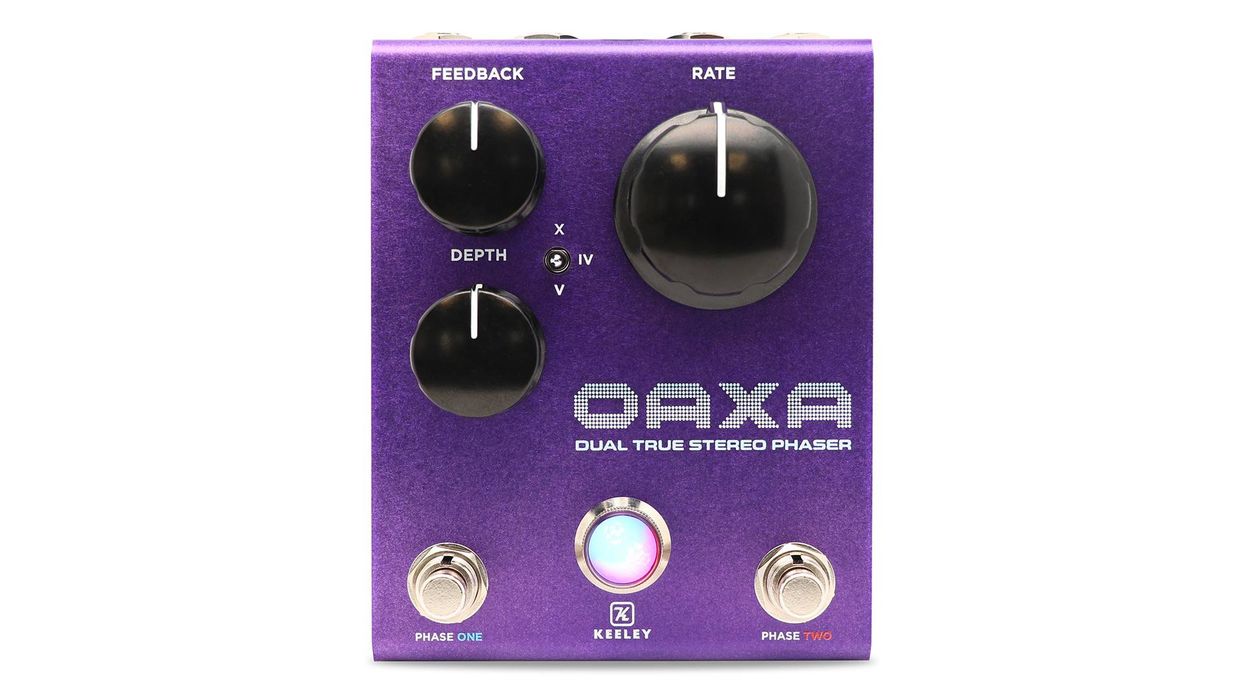
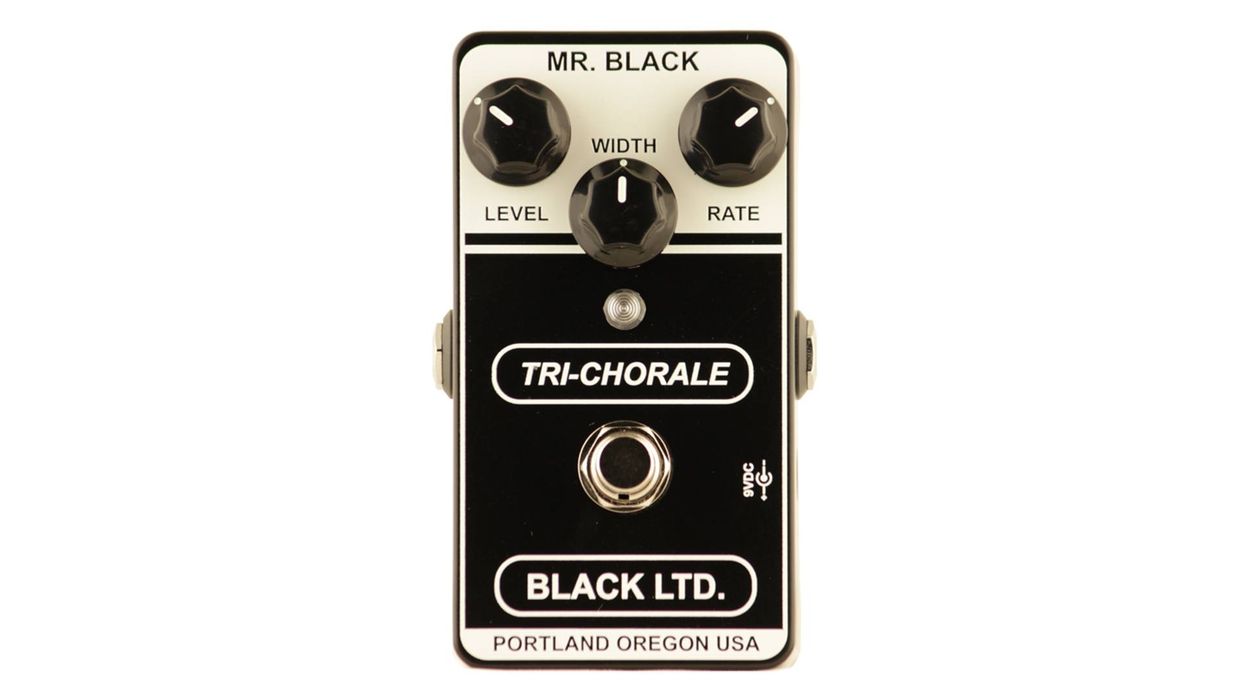


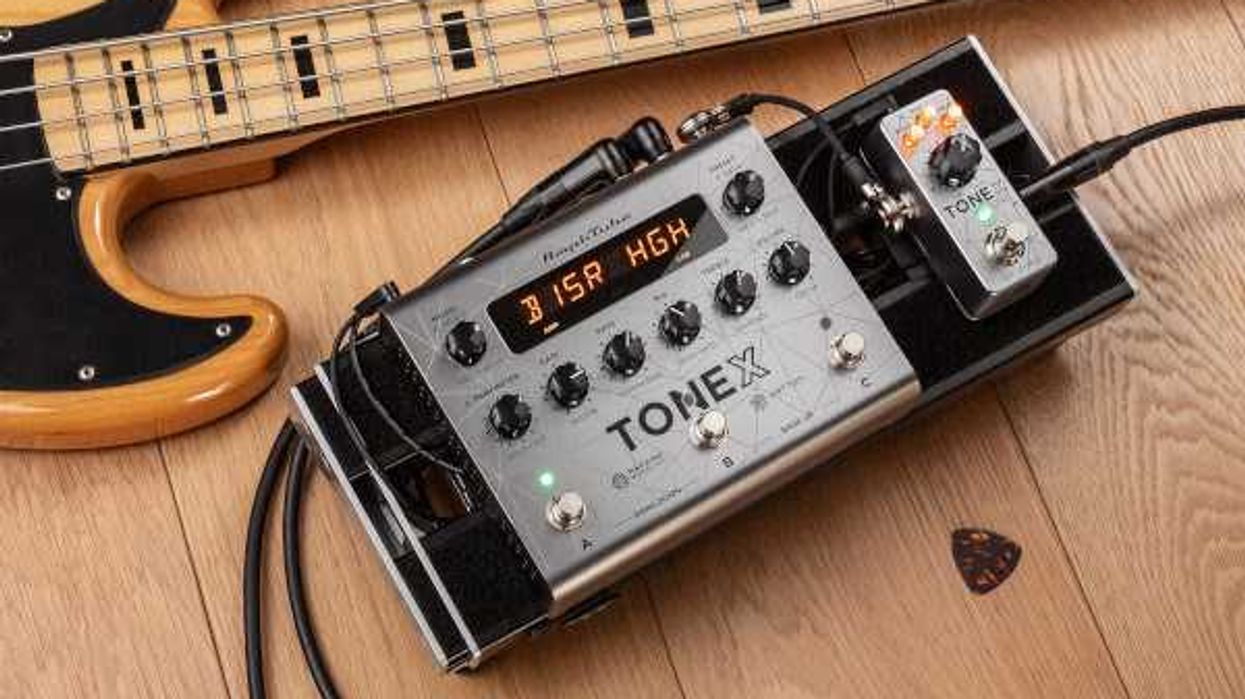
![Devon Eisenbarger [Katy Perry] Rig Rundown](https://www.premierguitar.com/media-library/youtube.jpg?id=61774583&width=1245&height=700&quality=70&coordinates=0%2C0%2C0%2C0)
















































